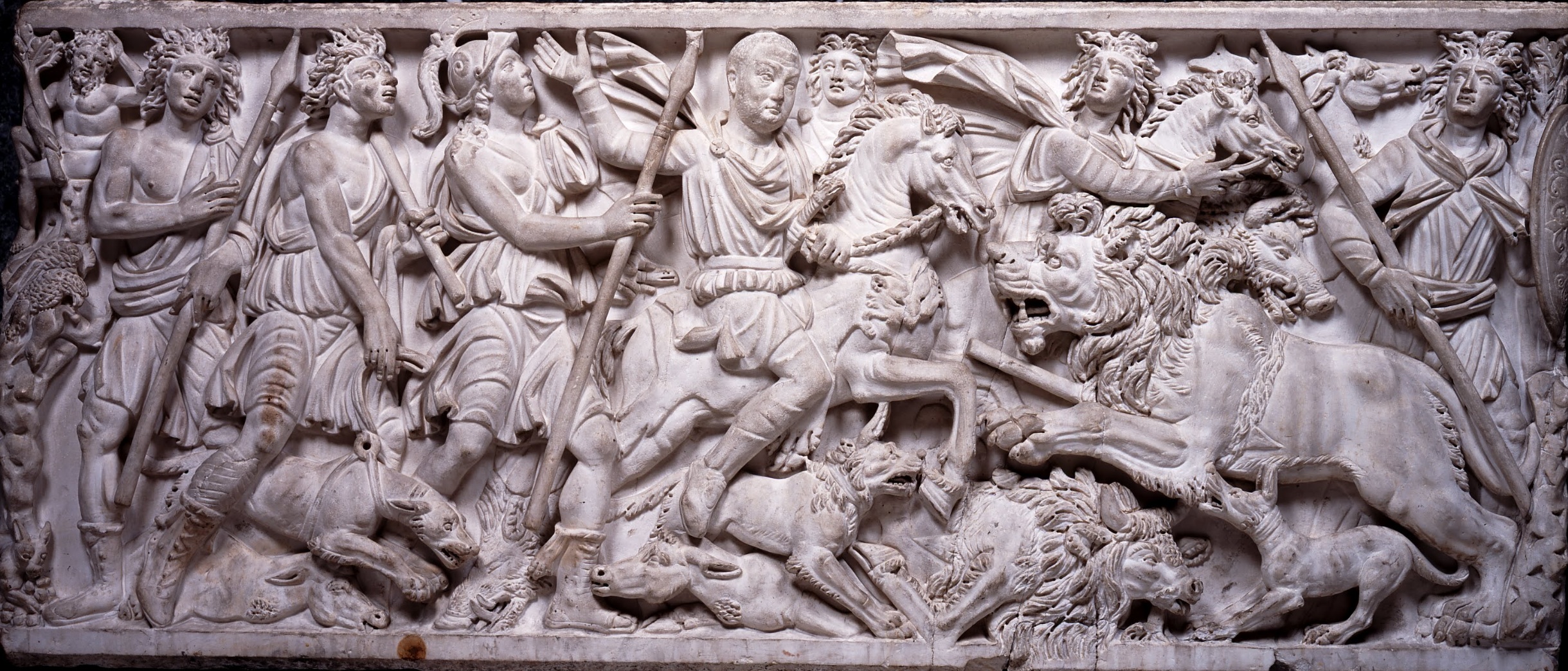
Life and Death in Rome Medea Sarcophagus (-140)
Medea, granddaughter of the sun god Helios and daughter of the king of Colchis, on the far side of the Black Sea, used her magical powers to help the Argonauts gain the Golden Fleece and fell in love with their leader, Jason. On returning home to Iolcus, the hero handed the trophy to his uncle Pelias, who still refused him his royal inheritance. After Medea tricked Pelias' daughter into murdering her father, the lovers fled to the court of King Creon in Corinth. There they lived for ten years with their two sons, until Jason disowned his wife in order to marry the Icing's daughter Creusa. Creon now wanted to banish the frightening stranger and her children from Corinth. Deeply wounded, Medea sought the deadly revenge recounted in the four scenes of this relief. Here Medea has sent her sons with a gold diadem and costly wedding dress for the bride. Creusa receives the twins graciously, seated on the throne in the decorated palace; Medea's old nurse accompanies the children, and in the background is the man who will give away the bride, bearing poppy heads; on the left, Jason calmly observes the presentation of the gifts. The link to the next scene is made through the couple's hands: Creusa's a little raised, Jason's hanging loosely by his side as, standing beside a spear-carrier in the middle of the relief, he observes the cruel effect of Medea's presents. For, as soon as Creusa puts it on, the diadem bursts into flame, and she rises from her bed to try in vain to save herself. Her father, Creon, rushes to the scene and tears his hair in desperation. The next murder occurs shortly afterwards: as her two carefree children play ball, their mother, Medea, brandishes a sword behind them, intending to kill them in order to complete her vengeance on Jason. In the last scene Medea flees with the corpses of her children in Helios' dragon-drawn chariot; one of the boys is on her shoulders, while the legs of the other hang out of the chariot. Through the mythical fable recounted in the Medea of the Greek poet Euripides, first performed in Athens in 432 BCE – with its tale of death and marriage, of a young woman's terrible pain at what should be her happiest moment – the Roman observer of six hundred years later was offered an image of the tragedy that had befallen the deceased.
Medea, granddaughter of the sun god Helios and daughter of the king of Colchis, on the far side of the Black Sea, used her magical powers to help the Argonauts gain the Golden Fleece and fell in love with their leader, Jason. On returning h ...

Details Unknown.jpg)
Details Unknown.jpg)


Details Unknown artist.jpg)
Details Unknown artist.jpg)

